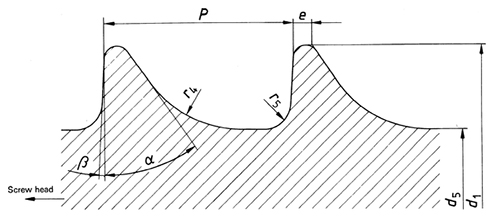Bone screws in orthopedic surgery
FeaturedBone screws are fundamental components in orthopedic surgery, essential for stabilizing and fixating bones. They play a crucial role in various procedures, from fracture repair to spinal fusion and joint reconstruction. This guide provides an in-depth overview of bone screws, including their types, materials, applications, considerations, complications, and innovations.
Types of Bone Screws
- Cortical Screws:
- Design: Fine threads along the entire length for increased grip in dense bone.
- Usage: Ideal for hard, dense cortical bone, typically found in the diaphysis (shaft) of long bones.
- Advantages: Provide strong fixation due to the fine thread pitch, making them suitable for stabilizing long bone fractures.
- Cancellous Screws:
- Design: Coarser threads with a larger thread pitch to engage spongy bone.
- Usage: Used in softer, cancellous bone, usually located in the metaphysis (end) of bones.
- Advantages: Offer better purchase in less dense bone, often used for fractures in areas like the pelvis or the ends of long bones.
- Locking Screws:
- Design: Screws lock into plates, creating a fixed-angle construct that doesn’t rely on the bone-screw interface for stability.
- Usage: Commonly used with locking plates for fractures in osteoporotic or poor-quality bone.
- Advantages: Provide stable fixation even in compromised bone, reducing the risk of screw loosening.
- Non-Locking Screws:
- Design: Depend on friction between the screw threads and the bone.
- Usage: Standard for various fractures, relying on bone quality for stability.
- Advantages: Simple design effective in good-quality bone, widely used in routine orthopedic procedures.
- Cannulated Screws:
- Design: Feature a hollow core, allowing insertion over a guide wire.
- Usage: Ideal for minimally invasive procedures, such as treating femoral neck fractures.
- Advantages: Facilitate precise placement with minimal soft tissue disruption, improving surgical outcomes.
- Headless Compression Screws:
- Design: Lack a protruding head, with threads at both ends to compress fracture fragments.
- Usage: Used for small bone fractures, particularly in the hand and wrist.
- Advantages: Minimize soft tissue irritation and ensure compression at the fracture site for better healing.
Materials Used
- Stainless Steel:
- Properties: High strength, corrosion-resistant, and biocompatible.
- Usage: Commonly used due to durability and cost-effectiveness.
- Advantages: Reliable and versatile, suitable for a wide range of orthopedic applications.
- Titanium:
- Properties: Lightweight, excellent biocompatibility, and lower density than stainless steel.
- Usage: Preferred in cases where patients have metal sensitivities or allergies.
- Advantages: Promotes better bone integration and reduces the risk of allergic reactions.
- Bioabsorbable Materials:
- Properties: Gradually dissolve and are absorbed by the body over time.
- Usage: Used in specific situations where long-term presence of the screw is not desired.
- Advantages: Eliminates the need for removal surgery, reducing long-term complications and improving patient comfort.
Applications
Fracture Fixation
- Purpose: Stabilize bone fragments to enable proper healing.
- Common Sites: Long bones, pelvis, spine, and small bones.
- Method: Screws may be used alone or in combination with plates and other fixation devices.
Spinal Surgery
- Purpose: Stabilize vertebrae and promote fusion.
- Common Procedures: Spinal fusion, scoliosis correction.
- Method: Screws are often used with rods, cages, and other implants to stabilize the spine.
Joint Reconstruction
- Purpose: Stabilize joints and assist in ligament and tendon repair.
- Common Procedures: ACL reconstruction, shoulder stabilization.
- Method: Screws anchor grafts, attach prosthetic components, or stabilize joint structures.
Osteotomies
- Purpose: Correct bone deformities by surgically cutting and repositioning bones.
- Common Procedures: High tibial osteotomy, corrective surgeries for alignment issues.
- Method: Screws fixate the repositioned bone segments to ensure proper healing and alignment.
Considerations for Use
Biomechanical Properties
- Load Distribution: Ensuring screws can handle the stress and strain from bone movements.
- Stability: Selecting the appropriate screws to prevent micromotion at the fracture or fixation site.
Size and Length
- Appropriateness: Matching screw size to bone size to ensure adequate purchase without over-penetration.
- Measurement: Accurate preoperative planning and intraoperative measurement are crucial for proper screw selection.
Insertion Technique
- Accuracy: Precise placement to avoid damaging nerves, blood vessels, and other tissues.
- Tools: Utilizing drill guides, fluoroscopy, and navigation systems to enhance precision and safety.
Patient Factors
- Bone Quality: Considering bone density and quality, especially in osteoporotic patients.
- Age and Health: Assessing the patient's overall health and healing potential to select the best fixation strategy.
Complications
Infection
- Risk: A potential complication of any surgical procedure.
- Prevention: Maintaining sterile technique and administering prophylactic antibiotics to reduce infection risk.
Screw Loosening or Breakage
- Causes: Excessive stress, improper placement, or poor bone quality.
- Prevention: Ensuring proper surgical technique, selecting appropriate screw types, and closely monitoring postoperative progress.
Bone Healing Issues
- Non-Union: Failure of bone ends to unite.
- Malunion: Healing in an incorrect position.
- Prevention: Providing adequate fixation, ensuring proper alignment, and following postoperative care protocols.
Innovations
Bioabsorbable Screws
- Description: Made from materials like polylactic acid (PLA) that gradually dissolve and are absorbed by the body.
- Advantages: Eliminate the need for removal surgery, reduce long-term complications, and improve patient outcomes.
Antibacterial Coatings
- Description: Screws coated with substances that reduce bacterial adhesion and growth.
- Advantages: Lower infection rates, especially in high-risk surgeries, enhancing overall surgical success.
Advanced Imaging and Navigation
- Description: Use of intraoperative CT, MRI, and computer-assisted navigation to guide screw placement.
- Advantages: Improved accuracy in screw placement, better visualization of anatomical structures, and enhanced surgical outcomes.
Conclusion
Bone screws are vital in orthopedic surgery, offering essential stability for bone healing and repair. The selection of screw type, material, and insertion technique must be tailored to each patient and surgical scenario to ensure optimal outcomes. Advances in materials and technology continue to enhance the effectiveness and safety of these critical devices, contributing to improved patient care and recovery.

Shallow thread (reference: ISO 5835:1991)
